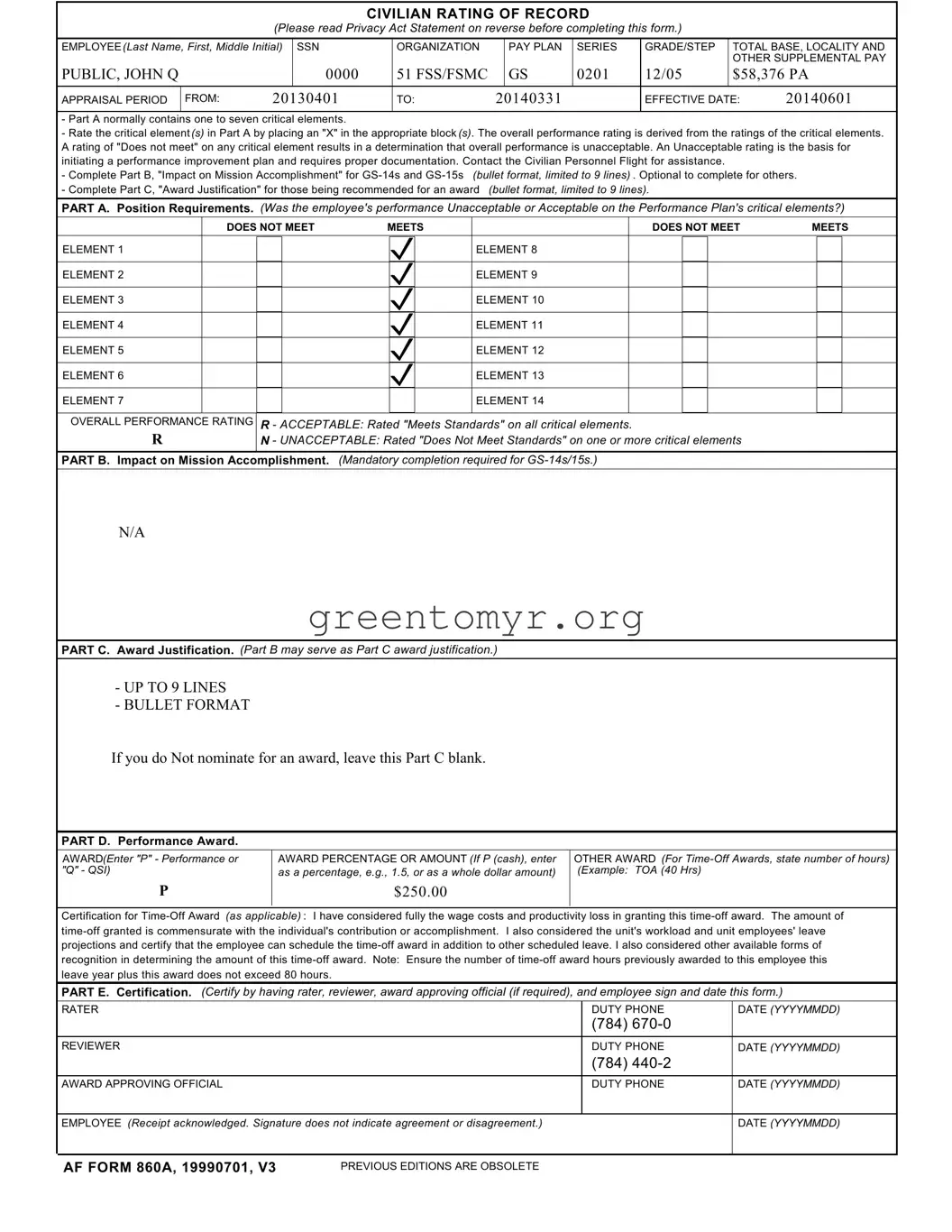Completing the AF Form 860A accurately is essential for ensuring that performance reviews and awards are processed correctly. Many individuals make mistakes when filling out this form, which can affect their evaluations and potential benefits. Awareness of common errors can help mitigate these issues.
One frequent mistake is failing to provide complete information in the Employee Information section. It's vital to ensure that all requested details, such as the full name, Social Security Number, and organization, are filled out correctly. Omitting or misspelling any of this information can result in delays and complications during the evaluation process.
Another common error concerns the ratings in Part A. Some may misunderstand how to rate performance on the critical elements. A common error is assuming that all ratings can be "Meets Standards" without careful consideration. A rating of "Does Not Meet" in any category results in an overall unacceptable rating, impacting overall performance evaluations and subsequent actions that may be necessary.
Additionally, individuals often neglect to complete Part B, which requires providing the "Impact on Mission Accomplishment" for GS-14s and GS-15s. Skipping this section can hinder the ability to clearly outline the employee's contributions, particularly for those in higher positions. While this part is optional for other employees, taking the time to complete it could add significant value.
Completing Part C incorrectly is another frequent mistake. Employees may confuse this part with an award justification, failing to provide bullet points as required. It's crucial to limit the entries to nine lines in bullet format and to ensure that the information clearly articulates the reasons for the award. Leaving this portion blank when nominations are appropriate can result in missed opportunities for recognition.
Furthermore, errors can occur in Part D, specifically regarding award percentages or amounts. It is critical to ensure that the entered values accurately reflect the intended cash awards or time-off awards. Lack of accuracy here could lead to confusion or errors in processing awards.
Certification errors often happen in Part E. Each signatory must ensure their name, title, and date are correctly completed. Missing signatures or incorrect dates can jeopardize the integrity of the entire document. Therefore, confirming that all parties have signed and dated the form appropriately is essential.
Lastly, a lack of attention to Part F can be detrimental. Ratings on appraisal factors must accurately represent observed performance behaviors. Employees should be cautious to ensure their ratings reflect actual performance levels, as this section can affect competitive placements in cases such as promotions or reassignments.
By being mindful of these common mistakes, individuals can improve the accuracy of their completion of the AF Form 860A. This attention to detail ultimately supports fair evaluations and appropriate recognitions within the workforce.


